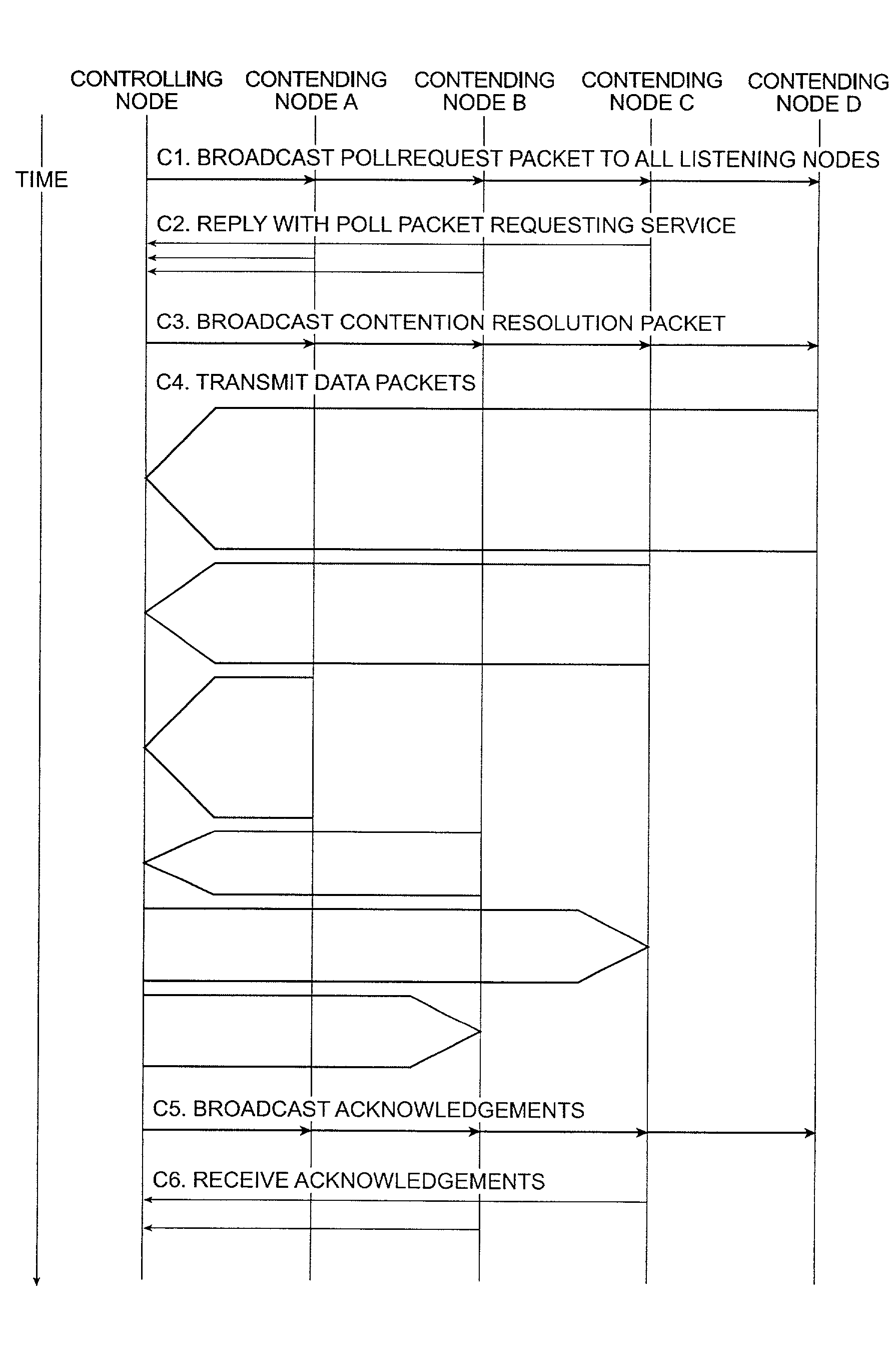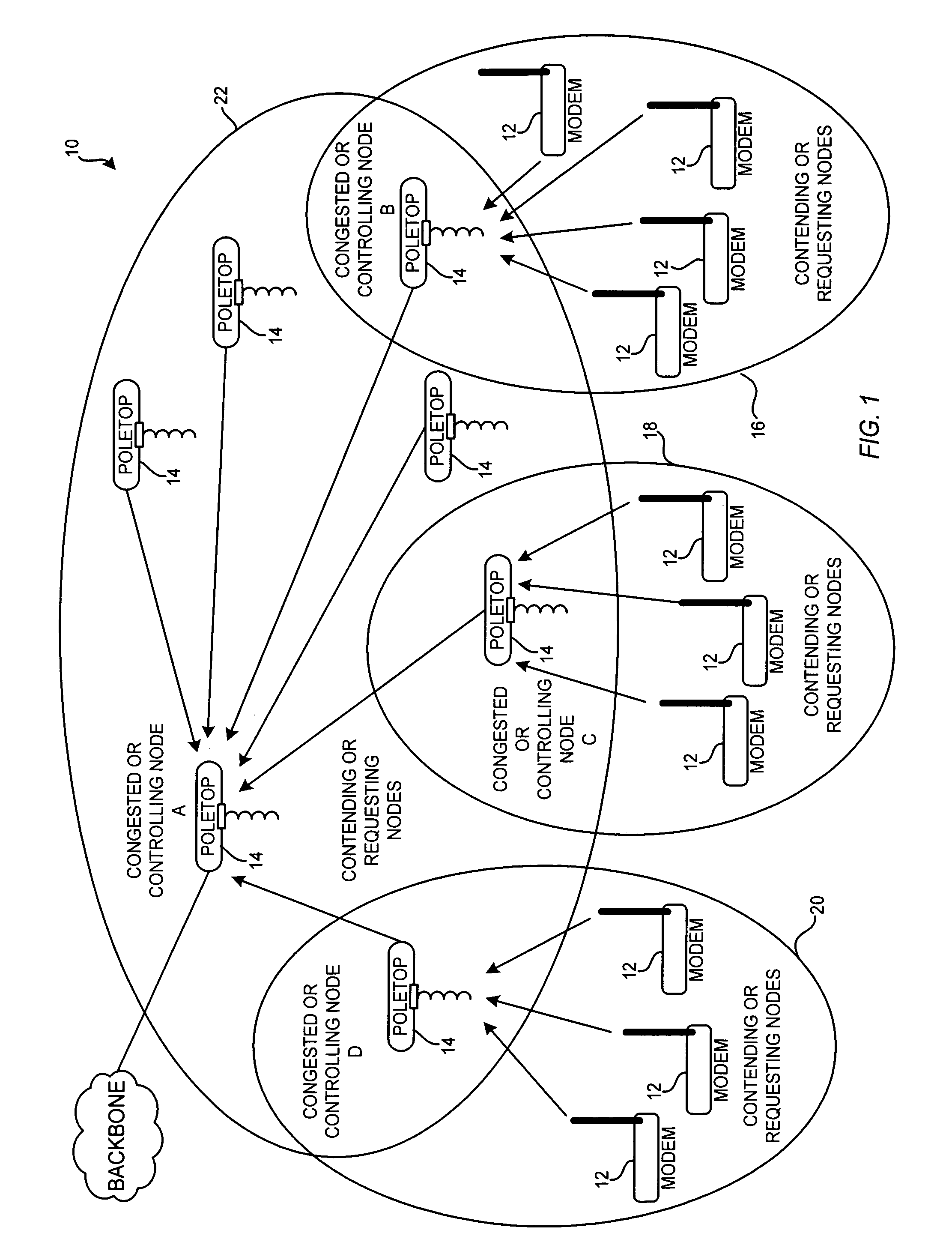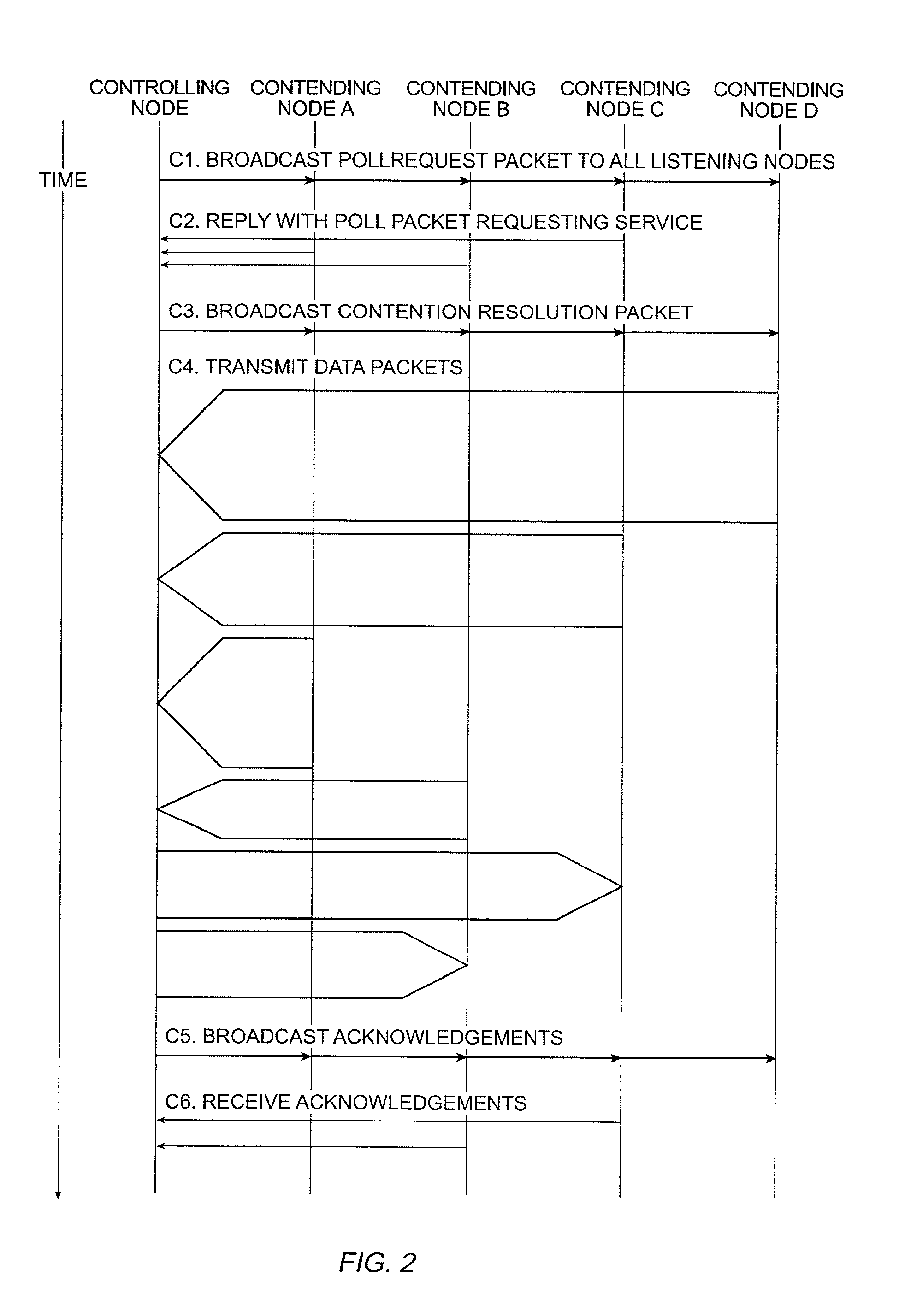Method and apparatus for contention management in a radio-based packet network
a radio-based packet network and contention management technology, applied in data switching networks, frequency-division multiplexes, instruments, etc., can solve the problems of network congestion, packet loss, packet interference and loss of some packets, and achieve the effect of preventing resource capture, reducing network congestion, and reducing bandwidth
- Summary
- Abstract
- Description
- Claims
- Application Information
AI Technical Summary
Benefits of technology
Problems solved by technology
Method used
Image
Examples
Embodiment Construction
[0035]As shown in FIG. 1, it is often the case in a mesh network 10 that multiple radios of a selected type, namely wireless modems 12 or poletops 14, wish to send their packet to the same node A. The modems 12 send packets to and receive packets from various poletops 14. The poletops 14 send and receive packets to and from a poletop 14 at Node A that is connected to the wired infrastructure backbone 16. Each group 16, 18, 20, 22 of radios participating in a PRP group is logically associated by communication with a common server at Node A, Node B, Node C and Node D (as circled). One of the PRP groups 22 can be defined as consisting of only poletop units associated with a server at node A. The node with contention above an indeterminate threshold representing congestion is the controlling node for its PRP group; all of the other radios must request its service in order to be functional. In the other three groups, the poletop (at nodes B, C, or D) the nodes are also under contention a...
PUM
 Login to View More
Login to View More Abstract
Description
Claims
Application Information
 Login to View More
Login to View More - R&D
- Intellectual Property
- Life Sciences
- Materials
- Tech Scout
- Unparalleled Data Quality
- Higher Quality Content
- 60% Fewer Hallucinations
Browse by: Latest US Patents, China's latest patents, Technical Efficacy Thesaurus, Application Domain, Technology Topic, Popular Technical Reports.
© 2025 PatSnap. All rights reserved.Legal|Privacy policy|Modern Slavery Act Transparency Statement|Sitemap|About US| Contact US: help@patsnap.com



